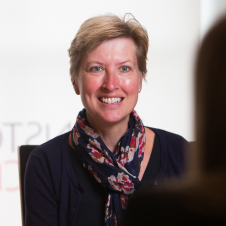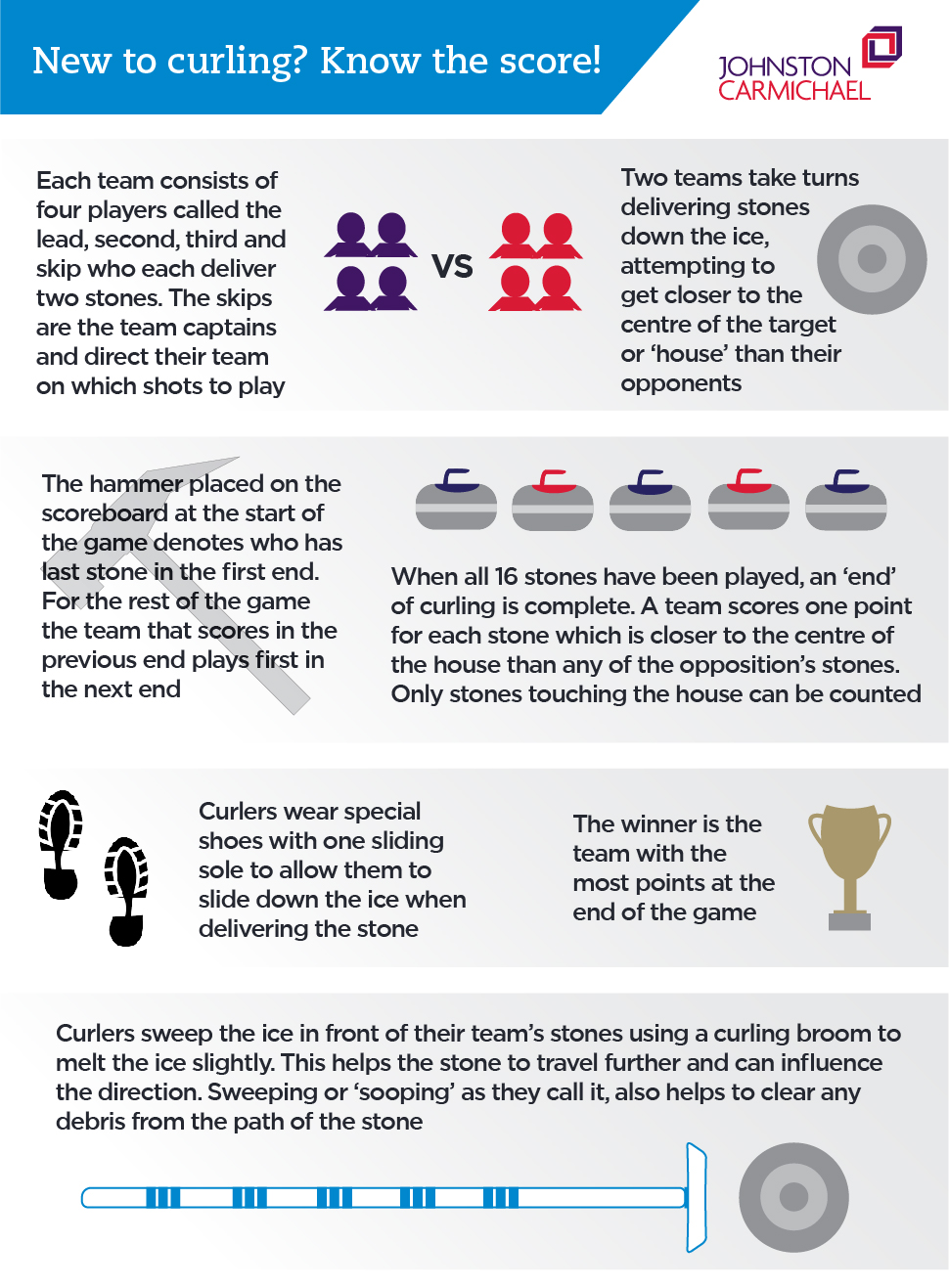Curling 101 - All you need to know about the icy sport of Curling in Scotland

Jane Mitchell
Business Advisory Director & Rural Specialist
10 October 2019
Johnston Carmichael are proud sponsors of the 2019 World Mixed Curling Championship, having also sponsored the 2018 Scottish Curling Junior Championships and 2018 World Junior Curling Championships. In this blog, we share some insight into the wonderful world of the ‘Roaring Game’, the sport also known as ‘Chess on Ice’.
OK, so let’s start with the basics - what on earth is Curling?
Well, in the simplest of terms, and according to Wikipedia, Curling is a sport in which players slide stones on a sheet of ice towards a target area which is segmented into four concentric circles. It falls within the family of bowls, boules and shuffleboard.
With its roots in medieval Scotland, Curling is widely believed to be one of the world’s first team sports, initially played in the 16th Century on frozen lochs and ponds. The game is played in a team of 3 or 4 players on a 150-foot-long ice sheet with a target at the end which is called the 'house'. It’s often referred to as the ‘Roaring Game’ due to the loud ‘roar’ of the stone as it travels over the ice.
In a game of Curling, two teams take turns in sliding an 18 kilo granite stone down the ice towards the house, aiming to get as close to the centre as possible. Each team slides eight stones in a round, which is called an end. Club matches and bonspiels are usually only 8 ends with championship tournaments being 10 ends.
What are those stones? And what’s with all the sweeping?
The vast majority of curling stones are made from two types of granite sourced from a tiny island off the west coast of Scotland, called Ailsa Craig. The granite’s unique volcanic properties make the stones from Ailsa Craig the Olympic ‘Gold’ standard and, according to Erika Brown, skipper of the US curling team at the Sochi Winter Olympics in 2014, ‘no other stone curls like an Ailsa Craig stone’!
As each stone is pushed down the ice, it is slowed down by tiny ice pebbles. The pebbles are swept and brushed, and ultimately melted away so that the stone will travel further, and in a straighter line. The aim of the game is to sweep the stones as close to the ‘house’ as possible, with points scored by leaving stones closest to the white centre circle, or ‘button’.
The team with the closest stone to the button scores a point. If they have more than one stone closer to the button than the other team they will score more points.
A traditional curling match lasts for 10 ends, and the team with the most points at the end of these 10 rounds is declared the winner. Usually only one or two points are scored per end so matches tend to be quite close.
Who plays it?
While Curling was introduced to the Olympic Winter sports at Chamonix in 1924, it became more prominent in the 1980s/90s, and has grown to become one of the most popular winter sports in Canada, the USA and Scotland. Whilst it may not involve huge amounts of aerobic exertion, Curling requires extensive team work, strategic thinking and mental toughness. It’s a hugely inclusive sport and accessible to players of all ages, often becoming a lifelong passion for those who play it.
Curling is played and enjoyed in many communities across Scotland, and is governed by the Royal Caledonian Curling Club, with approximately 12,500 members in over 640 clubs.
The World Mixed Curling Championship 2019
The World Mixed Curling Championship is being hosted at Aberdeen’s state-of-the-art, purpose-built curling facility, Curl Aberdeen.
The Championship is a open entry event for the 61 Member Associations of the World Curling Federation. Teams are mixed-gender, and the rules differ slightly to traditional curling in that games are played up to a maximum of eight ends, rather than the usual 10.
The tournament kicks off on 12 October 2019, with the finals taking place on 19 October. Good luck to all the competitors!

